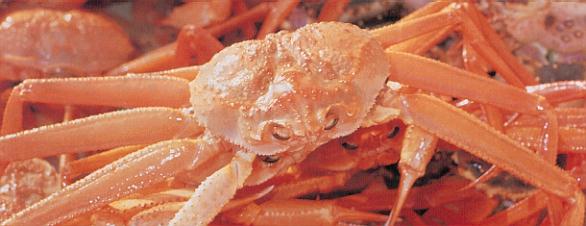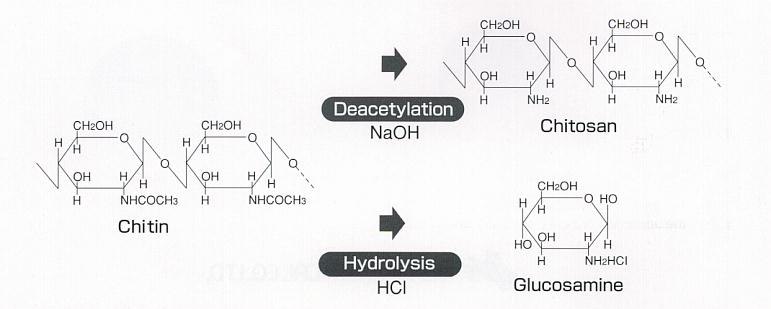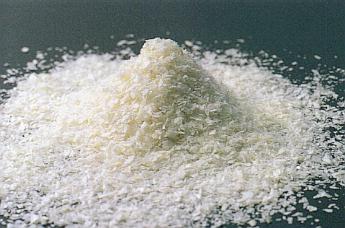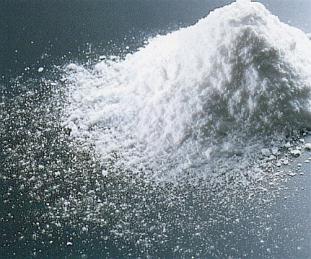CHITOSAN & GLUCOSAMINE POWDER
Physiological functions -
decreasing cholesterol, inhibiting fat absorption,
inhibiting blood pressure elevation and improving intestinal metabolism


Chitosan is a deacetylated derivative of chitin. It is polysaccharide found in nature with an amino group, contained in the shells of Crustacea such as crab, shrimp, etc. Chitosan is a white to light-red solid powder, insoluble in water, soluble in organic acid, but indigestible by human digestive enzymes. Therefore, it is one of the so-called dietary fibers.
The chemical structures of chitin, chitosan and glucosamine are shown below.

Crab shells are treated with dilute hydrochloric acid and dilute sodium hydroxide to remove calcium and protein. The product thus obtained is called chitin, and its further deacetylated product with concentrated sodium hydroxide is chitosan. Both chitin and chitosan are white to light-yellow or light-red substances with chemical structures quite similar to that of cellulose. Both are stable natural high molecular substances with strong inter-molecular binding force due to intramolecular amino group.
Glucosamine, a monosaccharide and component sugar of chitosan, can also be obtained by direct hydrolysis of chitin.
CHITOSAN AS FOOD MATERIAL
|
 |
SPECIFICATIONS - Dietary Fiber Registration No.970301
Source............................. Shells of Crustacea such as crab and shrimp
Appearance......................... White to light-red powder or flake
Water content...................... 10% maximum
Dilute acid insoluble.............. 1% maximum (calculated as dried matter material)
Viscosity.......................... 20mPa.s minimum
Degree of deacetylation............ 80% minimum
Ash................................ 1% maximum (calculated as dried material)
Arsenic ........................... 1 ppm maximum
Heavy metals....................... 5 ppm maximum as Pb
General bacterial count............ 3 x 1000/g maximum
Coliform bacilli................... negative
FORMULATION/DOSAGE:
Hard capsule, tablet (w/binding agents like dextrin,lactose), granule
Recommended daily dosage is 1.2g to 1.5g as material.
Chitosan Powder/Product Number
Certificate of Analysis for Chitosan FM-200
Glucosamine Hydrochloride Glucosamine, an amino monosaccharide which forms chitosan, is one of the biological components approved as a food additive in Japan. Biologically, it is present mainly as a component of mucoprotein distributed in connective tissues such as cartilage, synovial fluid, blood vessel walls, etc. Glucosamine has been claimed to be effective as a treatment for osteoarthritis both by injection and oral administration, and in Europe and America it has been actively used in various ways in medical drugs and health foods. |
 |
bacterial count
Click and see!
Chitosan Hard Capsule
Glucosamine Tablets